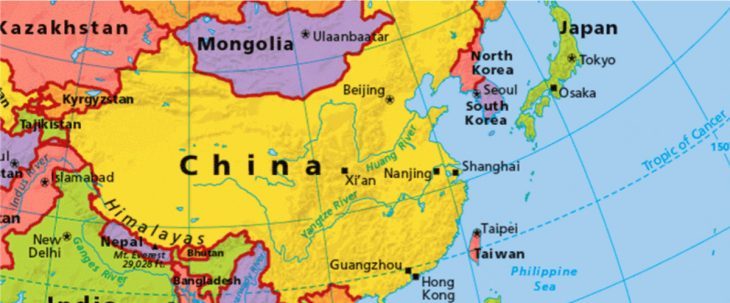China not buying American soybeans; could hurt prices, reduce Arkansas acreage
by May 9, 2018 7:22 pm 644 views

Chinese soybean buyers have stopped buying U.S. produced soybeans, and at this point in the growing season it’s mildly concerning, University of Arkansas at Monticello agriculture economist Dr. Robert Stark Jr. told Talk Business & Politics.
China primarily buys soybeans from South American countries such as Brazil and Argentina in the spring and summer, and buys U.S. soybeans in the fall, he said. China also buys soybeans from Canada.
“There are a few points that are critical. … It’s seasonal in terms of impact,” Stark said.
China imports about 100 million metric tons of soybeans each year, and the U.S. contributes about 35% of that total, according to the United States Department of Agriculture. The U.S. and China have engaged in a pseudo trade war for the last several months, threatening to enact billions in trade tariffs on each others products ranging from steel to aluminum to agriculture products.
According to Reuters, China’s soybean imports in April totaled 6.9 million tons, down almost 14% compared with April 2017, and below the 8.5 million tons the markets had expected.
Several Chinese buyers have canceled soybean orders in recent days, according to The Associated Press. The reason for the cancellation is easily explained, Stark said. The soybeans would have to travel from the U.S. to China and it would likely take several weeks, he said. A proposed 25% tariff on soybeans might be enacted by then, he said. Those buyers don’t want to pay the higher cost.
The Chinese will likely take measures to not have to buy American soybeans, Stark said. It could include stockpiling South American soybeans. That option could be limited because a drought has reduced the spring crops in those countries, Stark said. The Chinese government has raised its subsidy rate for farmers to grow soybeans from $162 per acre, to $190 per acre.
‘ECONOMICALLY BELLIGERENT’
These moves will only go so far, he said. The country’s storage capacity is limited, and the average income in the country has grown, meaning the population is consuming a more protein-based diet, he said. Soybeans are a key ingredient for livestock.
“The Chinese will have to buy soybeans,” he said.
If China takes more soybeans off the international market, it could open up other markets for the U.S. in places such as Europe. U.S. soybeans could end up in China through other countries.
U.S. Rep. Rick Crawford, R-Jonesboro, told Talk Business & Politics that China will buy U.S. agriculture products – directly or indirectly.
“China may not be buying our soybeans … for now,” said Rep. Crawford, who has supported Trump’s tariff moves. “They continue to be economically belligerent. However, as I understand it, Argentina has recently purchased U.S. soybeans. Given drought conditions in Argentina at this time, it’s fairly safe to assume that they are buying those soybeans to fill orders from China.”
Agriculture items such as grain are “fungible” in the markets, and China has a large population to feed, he said. This fundamental dynamic hasn’t changed, and it won’t for awhile, he said. Each American industry sector, including ag, needs to stand up against Chinese predatory economic practices, he added.
PRICES, ACREAGE
Threats of a trade war have not yet hurt bushel prices. New crop soybeans traded from $9.95 to $10.20 per bushel depending upon the market on Wednesday (May 9). That’s up from the $9.55 bushel average from the same week in May 2017, according to Farm Futures.
U.S. farmers are expected to grow 89 million soybean acres this year, and for the first time in 20 years, the soybean acreage will outpace corn acreage (88 million acres.) Corn input costs are slightly higher and slightly better soybean prices compared to 2017 have compelled some farmers to dedicate more acres to soybeans, Stark said.
Stark isn’t aware of any Arkansas farmers growing less soybeans because of uncertainties with China. The growing season in the state started later than usual, and that typically means farms will end up planting more soybeans, he said. Corn is usually planted earlier, and when the weather remained colder and wetter than usual in April, it means less corn was probably planted, he said.
In 2017 the state grew 3.5 million acres of soybeans, according to the USDA. Soybeans are the state’s most abundant crop, and the five leading soybean-producing counties are in Northeast Arkansas, according to the USDA. Mississippi County (292,453 acres) had the most followed by Phillips County (244,940 acres), Crittenden County (236,838 acres), Poinsett County (197,590 acres) and Arkansas County (179,388 acres).
Soybean prices have been depressed in recent years because of a surge in soybean market growth in South America, especially in Brazil and Argentina. Farmers in those countries are slashing rain forest acres to create soybean farms.
The political and policy landscape could vastly change in the coming months, and this may just be a blip in the market, or it could become a serious concern for producers, Stark said. Political headwinds, just like the weather, are keeping farmers on edge as the planting season enters full swing, he added.
“It’s not totally clear what the impacts will be. … There’s still time until we start harvesting soybeans in August,” he said.
